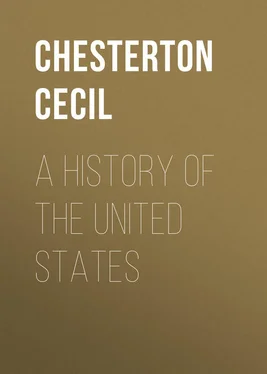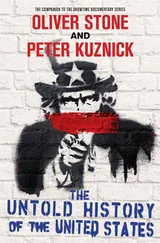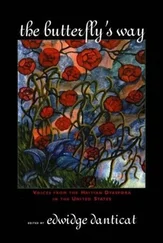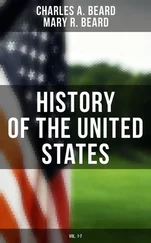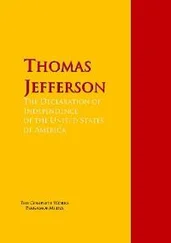Cecil Chesterton - A History of the United States
Здесь есть возможность читать онлайн «Cecil Chesterton - A History of the United States» — ознакомительный отрывок электронной книги совершенно бесплатно, а после прочтения отрывка купить полную версию. В некоторых случаях можно слушать аудио, скачать через торрент в формате fb2 и присутствует краткое содержание. Жанр: foreign_antique, foreign_prose, на английском языке. Описание произведения, (предисловие) а так же отзывы посетителей доступны на портале библиотеки ЛибКат.
- Название:A History of the United States
- Автор:
- Жанр:
- Год:неизвестен
- ISBN:нет данных
- Рейтинг книги:3 / 5. Голосов: 1
-
Избранное:Добавить в избранное
- Отзывы:
-
Ваша оценка:
- 60
- 1
- 2
- 3
- 4
- 5
A History of the United States: краткое содержание, описание и аннотация
Предлагаем к чтению аннотацию, описание, краткое содержание или предисловие (зависит от того, что написал сам автор книги «A History of the United States»). Если вы не нашли необходимую информацию о книге — напишите в комментариях, мы постараемся отыскать её.
A History of the United States — читать онлайн ознакомительный отрывок
Ниже представлен текст книги, разбитый по страницам. Система сохранения места последней прочитанной страницы, позволяет с удобством читать онлайн бесплатно книгу «A History of the United States», без необходимости каждый раз заново искать на чём Вы остановились. Поставьте закладку, и сможете в любой момент перейти на страницу, на которой закончили чтение.
Интервал:
Закладка:
In the subsequent history of the English colonies which became American States we often find a curious and recurrent reflection of their origin. Virginia was the first of those colonies to come into existence, and we shall see her both as a colony and as a State long retaining a sort of primacy amongst them. She also retained, in the incidents of her history and in the characters of many of her great men, a colour which seems partly Elizabethan. Her Jefferson, with his omnivorous culture, his love of music and the arts, his proficiency at the same time in sports and bodily exercises, suggests something of the graceful versatility of men like Essex and Raleigh, and we shall see her in her last agony produce a soldier about whose high chivalry and heroic and adventurous failure there clings a light of romance that does not seem to belong to the modern world.
If the external quarrels of England were the immediate cause of the foundation of Virginia, the two colonies which next make their appearance owe their origin to her internal divisions. James I. and his son Charles I., though by conviction much more genuine Protestants than Elizabeth, were politically more disposed to treat the Catholics with leniency. The paradox is not, perhaps, difficult to explain. Being more genuinely Protestant they were more interested in the internecine quarrels of Protestants, and their enemies in those internecine quarrels, the Puritans, now become a formidable party, were naturally the fiercest enemies of the old religion. This fact probably led the two first Stuarts to look upon that religion with more indulgence. They dared not openly tolerate the Catholics, but they were not unwilling to show them such favour as they could afford to give. Therefore when a Catholic noble, Lord Baltimore, proposed to found a new plantation in America where his co-religionists could practise their faith in peace and security, the Stuart kings were willing enough to grant his request. James approved the project, his son confirmed it, and, under a Royal Charter from King Charles I., Lord Baltimore established his Catholic colony, which he called "Maryland." The early history of this colony is interesting because it affords probably the first example of full religious liberty. It would doubtless have been suicidal for the Catholics, situated as they were, to attempt anything like persecution, but Baltimore and the Catholics of Maryland for many generations deserve none the less honour for the consistency with which they pursued their tolerant policy. So long as the Catholics remained in control all sects were not only tolerated but placed on a footing of complete equality before the law, and as a fact both the Nonconformist persecuted in Virginia and the Episcopalian persecuted in New England frequently found refuge and peace in Catholic Maryland. The English Revolution of 1689 produced a change. The new English Government was pledged against the toleration of a Catholicism anywhere. The representative of the Baltimore family was deposed from the Governorship and the control transferred to the Protestants, who at once repealed the edicts of toleration and forbade the practice of the Catholic religion. They did not, however, succeed in extirpating it, and to this day many of the old Maryland families are Catholic, as are also a considerable proportion of the Negroes. It may further be noted that, though the experiment in religious equality was suppressed by violence, the idea seems never to have been effaced, and Maryland was one of the first colonies to accompany its demand for freedom with a declaration in favour of universal toleration.
At about the same time that the persecuted Catholics found a refuge in Maryland, a similar refuge was sought by the persecuted Puritans. A number of these, who had found a temporary home in Holland, sailed thence for America in the celebrated Mayflower and colonized New England on the Atlantic coast far to the north of the plantations of Raleigh and Baltimore. From this root sprang the colonies of Massachusetts, Connecticut, Vermont and Rhode Island, and later the States of New Hampshire and Maine. It would be putting it with ironical mildness to say that the Pilgrim Fathers did not imitate the tolerant example of the Catholic refugees. Religious persecution had indeed been practised by all parties in the quarrels of the sixteenth and seventeenth centuries; but for much of the early legislation of the Puritan colonies one can find no parallel in the history of European men. Calvinism, that strange fierce creed which Wesley so correctly described as one that gave God the exact functions and attributes of the devil, produced even in Europe a sufficiency of madness and horror; but here was Calvinism cut off from its European roots and from the reaction and influence of Christian civilization. Its records read like those of a madhouse where religious maniacs have broken loose and locked up their keepers. We hear of men stoned to death for kissing their wives on the Sabbath, of lovers pilloried or flogged at the cart's tail for kissing each other at all without licence from the deacons, the whole culminating in a mad panic of wholesale demonism and witchburning so vividly described in one of the most brilliant of Mrs. Gaskell's stories, "Lois the Witch." Of course, in time the fanaticism of the first New England settlers cooled into something like sanity. But a strong Puritan tradition remained and played a great part in American history. Indeed, if Lee, the Virginian, has about him something of the Cavalier, it is still more curious to note that nineteenth-century New England, with its atmosphere of quiet scholars and cultured tea parties, suddenly flung forth in John Brown a figure whose combination of soldierly skill with maniac fanaticism, of a martyr's fortitude with a murderer's cruelty, seems to have walked straight out of the seventeenth century and finds its nearest parallel in some of the warriors of the Covenant.
The colonies so far enumerated owe their foundation solely to English enterprise and energy; but in the latter half of the seventeenth century foreign war brought to England a batch of colonies ready made. At the mouth of the Hudson River, between Maryland and the New England colonies, lay the Dutch settlement of New Amsterdam. The first colonists who had established themselves there had been Swedes, but from Sweden its sovereignty had passed to Holland, and the issue of the Dutch wars gave it to the English, by whom it was re-christened New York in honour of the King's brother, afterwards James II. It would perhaps be straining the suggestion already made of the persistent influences of origins to see in the varied racial and national beginnings of New York a presage of that cosmopolitan quality which still marks the greatest of American cities, making much of it a patchwork of races and languages, and giving to the electric stir of Broadway an air which suggests a Continental rather than an English city, but it is more plausible to note that New York had no original link with the Puritanism of New England and of the North generally, and that in fact we shall find the premier city continually isolated from the North, following a tradition and a policy of its own.
With New Amsterdam was also ceded the small Dutch plantation of Delaware, which lay between Maryland and the Atlantic, while England at the same time established her claim to the disputed territory between the two which became the colony of New Jersey.
Shortly after the cession of New Amsterdam William Penn obtained from Charles II. a charter for the establishment of a colony to the north of Maryland, between that settlement and the newly acquired territories of New Jersey and New York. This plantation was designed especially as a refuge for the religious sect to which Penn belonged, the Quakers, who had been persecuted by all religious parties and especially savagely by the Puritan colonists of New England. Penn, the most remarkable man that ever professed the strange doctrines of that sect, was a favourite with the King, who had a keen eye for character, and as the son of a distinguished admiral he had a sort of hereditary claim upon the gratitude of the Crown. He easily carried his point with Charles, and himself supervised the foundations of the new commonwealth of Pennsylvania. Two surveyors were sent out by royal authority to fix the boundary between Penn's concession and the existing colony of Maryland – Mr. Mason and Mr. Dixon by name. However elated these two gentlemen may have been by their appointment to so responsible an office, they probably little thought that their names would be immortalized. Yet so it was to be. For the line they drew became the famous "Mason-Dixon" line, and was to be in after years the frontier between the Slave States and the Free.
Читать дальшеИнтервал:
Закладка:
Похожие книги на «A History of the United States»
Представляем Вашему вниманию похожие книги на «A History of the United States» списком для выбора. Мы отобрали схожую по названию и смыслу литературу в надежде предоставить читателям больше вариантов отыскать новые, интересные, ещё непрочитанные произведения.
Обсуждение, отзывы о книге «A History of the United States» и просто собственные мнения читателей. Оставьте ваши комментарии, напишите, что Вы думаете о произведении, его смысле или главных героях. Укажите что конкретно понравилось, а что нет, и почему Вы так считаете.
